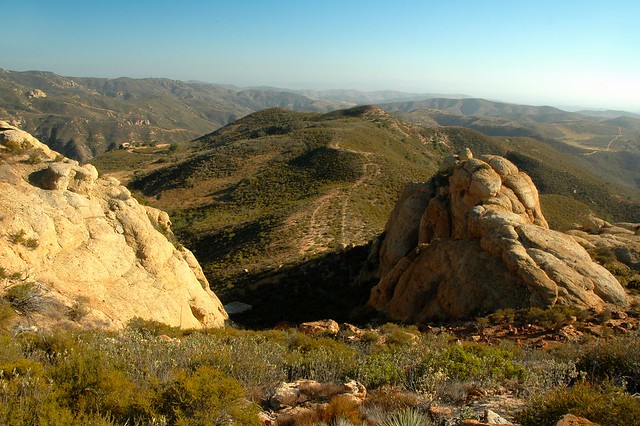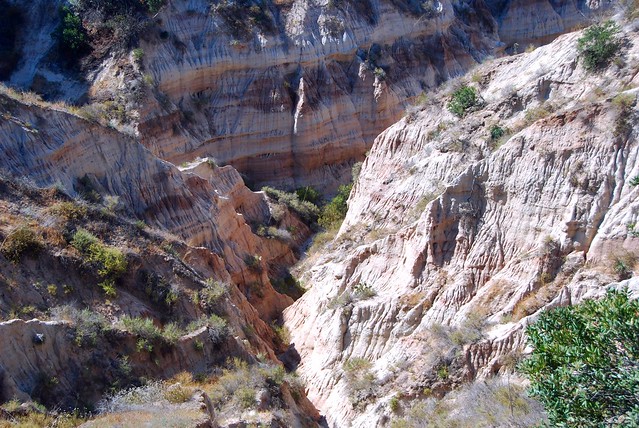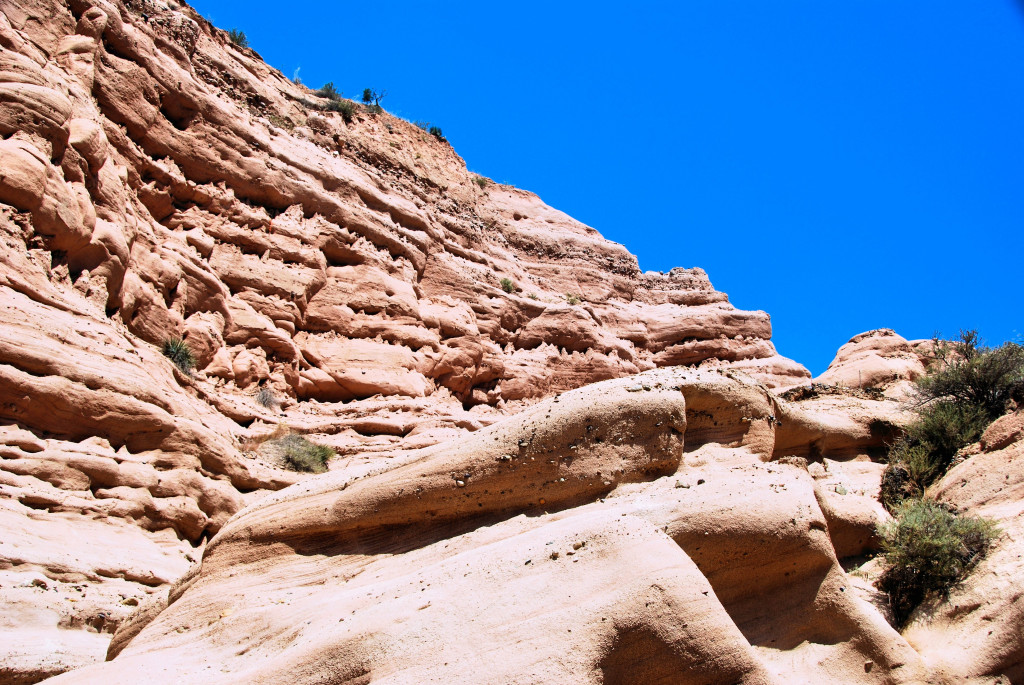The Middle of Nowhere lay on the line between the Cleveland National Forest and the Fremont Canyon Nature Preserve, among a collection of rocks called “Little Yosemite”. Massive boulders rose from the endless thicket of sagebrush, chaparral mallow, laurel sumac, and — the notorious fire starter — chamise. Some outcrops suggested the skulls of alien monsters, others had descriptive names like the Lizard, the Lamb, and R2D2. The cliffs faced the Santa Anas on one side and the Chino Hills on the other. You could see as far as the San Gabriels which rose from a smoggy valley of steel, concrete, and automobile congestion.
Tag Archives: geology
Wavy Water
Our midweek adventure — a scheduled event of the Irvine Ranch Natural Landmarks conservancy — took us four and a half hours to finish, counting the short breaks at The Sinks and Box Spring. The trail began at a notorious local dead end. We followed the water lines up Agua Chinon (“wavy water”) Canyon with no real trouble until we hit a steep loma as hellish as the south slope of Whiting’s Dreaded Hill. The summit brought us face to face with the western section of The Sinks
An inland sea or lake deposited the layers that appear in The Sinks formation about 40 million years ago. A long period of wet weather — sometime in the last million years — super-saturated the hills and caused the looser soil to slide away. The badland that was left exposed layers of harder red and white sediments that draw hikers and bikers to special “open days” at the Limestone Canyon Wilderness Park.
Continue reading
Whiting Red Rock
Shade wreaks a weird effect over the meadows along the Borrego Trail: Where the full sun yellows the grass, shadow keeps some patches green for a few more days.
I found few blossoms other than the last vestiges of the spring’s mustard, the gnarled blooms of incipient heartleaf penstemon, and the brash orange flowers of Bush Monkey Flower. The day was hot. The open sun at the end of the trail made me nauseous, but a deep draft from my Camelbak cured me.
The Red Rocks remain the Red Rocks, undulating down a cliff and through a canyon. My companions found it fit to discuss why some of the rocks were red and others were white. I did not take part in these as I did not answer questions about why I enjoyed learning about nature or defend the theory of evolution from a companion who was distressed by the fact that it wasn’t easy to understand. Perhaps I am meant for the silence of places like this, just as I choose to marvel mutely over stick insects that define the case for species change over time.




